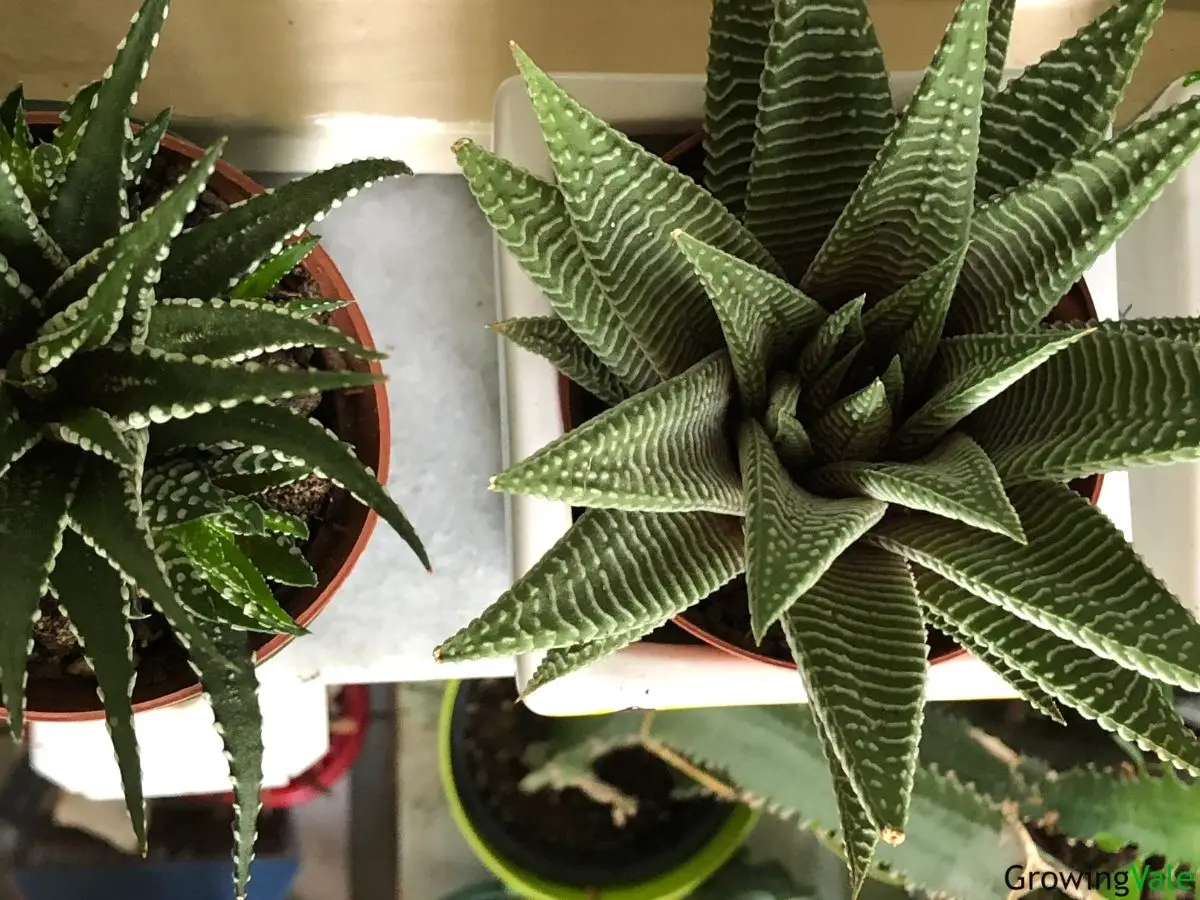Haworthia limifolia is a tough succulent that can be grown outdoors or indoors. Its light to deep green leaves are highly textural as they have shallow grooves that are oriented horizontally across each leaf. For this reason, the species has been likened to a washboard. The texture, which is only noticeable up close, is pleasant to the touch.
The rosettes of H. limifolia are compact enough to fully mask any trace of a stem. The leaves can often appear to occur in a perfect spiral. At maturity, the plant can reach a diameter of around 5-6 inches. Haworthia produces flower stalks when conditions are favorable each summer.
History
Native to Mozambique, Swaziland, and South Africa, H. limifolia can look like a miniature agave or aloe. Its leaves are adapted to low-moisture conditions. In its natural habitat, this species grows as clumps that spread over cliff faces. The leathery leaves are able to withstand wide variations in weather conditions.
In general, H. limifolia is a slow grower. Among its close Haworthia cousins, however, its leaves tend to lengthen and grow plump fairly quickly. It was recently reclassified under the Haworthiopsis genus, but its previous taxonomic identification is still acceptable.
Plant Facts
| Scientific name | Haworthiopsis limifolia, Haworthia limifolia |
| Common names | Fairy Washboard |
| Genus | Haworthiopsis |
| Family | Asphodelaceae |
| Height | 4-8 inches |
| Width | 5-6 inches |
| USDA Plant Hardiness Zone | 9-10 |
| Origin | Southeastern Africa |
| Flower colors | White |
| Blooming season | Summer |
| Plant/Flower special features | Textured foliage |
How to Plant and Grow Haworthia limifolia
H. limifolia does not have any special planting or cultivation needs and requires little maintenance as it grows. It simply has to be securely potted in a well-draining substrate, and preferably in a porous container with holes on the bottom. It can be planted with the use of offsets or seeds.
If you intend to use seeds, you will have to prepare a container that can keep the soil moist for a lengthy period of time. This is a must for the seeds, which must be soaked in warm water beforehand, to germinate. Germination can take weeks to months, depending on micro-conditions in your setup. Propagating Haworthia via offsets is more straightforward.
How to Propagate Haworthia limifolia
A mature H. limifolia can produce several pups each year. These should be separated from the mother plant and transplanted into their own pots. Make sure each pup is equipped with its own roots as these are necessary for the pup to become established on its own.

Care and Maintenance
Soil
Well-draining, sandy substrate is preferable for H. limifolia cultivation. This hardy species can tolerate packed soil more than its close cousins. It would still be best to plant it in a porous medium, however.
Water
H. limifolia thrives under generous but evenly spaced watering sessions. Water should be provided directly into the soil and not onto the rosette as droplets can become trapped in between the leaves.
Fertilizer
A liquid or slow-release fertilizer used at highly conservative concentrations can help the plant produce more offsets. Avoid fertilizing outside of the growth season.
Sunlight
The tough leaves of H. limifolia favor filtered sun conditions. If growing the plant indoors, place the pot close to a south facing window as its leaves benefit most from indirect sunlight.
Temperature and Humidity
An outdoor daytime temperature that ranges between 75-90F is optimal for H. limifolia. Slightly cooler indoor temperatures are tolerated, as long as the soil is allowed to dry out completely in between watering periods. Compared to other succulents, this species is not highly sensitive to humidity.
Pruning
H. limifolia does not have to be pruned. Division of offsets is more important for the plant’s growth.
Repotting and Transplanting
Whenever a rosette has outgrown its pot or has produced a profusion of offsets, it will benefit from being repotted.
Pests and Diseases
Resistant to most pests and diseases, H. limifolia is a sturdy species. Regardless, it would be best to isolate any nearby plants that have been affected to prevent contamination of your rosette.
Uses of Haworthia limifolia
Fairy washboard rosettes would look great in container gardens or on an indoor shelf. They are primarily used as ornamental plants.
Common Varieties
H. limifolia has many varieties that arise naturally throughout its native range, especially as it is more widespread compared to other types of Haworthia succulents. Popular varieties from the KwaZulu-Natal province of South Africa include ‘Striata’ and ‘Gigantea’. The ‘Ubomboensis’ and ‘Keithii’ varieties are endemic to Swaziland. ‘Glaucophylla’, a variety with smooth, blue-green foliage, arises in Barberton, a town situated in a South African valley.
Conclusion
If your indoor window sills and shelves are in need of some low-maintenance greens, you should definitely consider decorating them with some fairy washboard plants.

